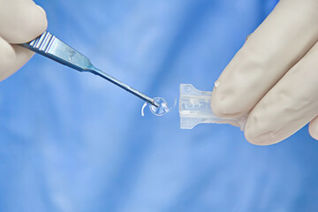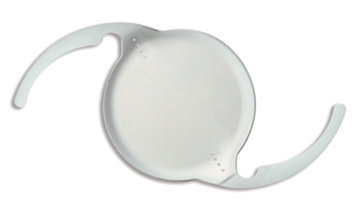Many are surprised to learn that cataracts are the largest single contributor to reversible blindness and, as a result, cataract surgery has become one of the most well-understood and common types of eye surgery out there. Something that Dr. Hwang finds interesting about cataract surgery is that it has improved significantly as innovations and advancements to medical technology improve strategies, techniques, and health outcomes for patients.
Brice Hwang MD acknowledges that there are many cataract patients out there who would like to learn more about the options that are available to them and, here, he explores the different types of cataract surgeries and range of intraocular lenses.
Phacoemulsification (Phaco)
Phacoemulsification is a type of cataract surgery that involves the smallest possible corneal incision. Phaco is a modern approach that uses high-frequency ultrasound to break up (emulsify) the cataract so that it can be removed by the surgeon in small pieces with suction from the small corneal opening. After the small incision around the cornea’s edge creates an opening through the membrane that surrounds the lens and it is removed, the artificial lens is placed. One of the benefits of phacoemulsification is that the incision is so small that it will typically not require sutures. As a slightly less invasive form of cataract surgery, there are improved healing outcomes and faster healing times.
Extracapsular Surgery

In contrast to phacoemulsification, extracapsular surgery is a less common approach where the lens is removed in one piece through a larger incision. Brice Hwang MD finds that this type of cataract surgery is most commonly used for patients with cataracts that have progressed to the point where they are hard, mature, and thus harder to break up. Surgical tools are used to remove the front capsule as well as the natural lens that contains the cataract, leaving the back lens capsule in place to support the artificial lens.
Laser Assisted Cataract Surgery (LACS)
Laser assisted cataract surgery (LACS) uses a laser to replace some of the manual steps in traditional cataract surgery which are performed with a scalpel. In addition to making the opening in the capsule, the laser also serves to soften the cataract to make it easier to remove. An ultrasound device or camera maps out the surface of the patient’s eye to gather information on the size, depth, and location of the incisions made. Dr. Brice Hwang mentions that there has been much less medical research performed on the effectiveness of LACS than phacoemulsification or extracapsular surgery, however some studies have shown that the lasers can create more precise, smaller incisions than ones that are performed manually. This may equal less healing time for some patients.
What Are the Different Types of Intraocular Lenses (IOLs)

Intraocular lenses, or IOLs, replace natural lenses that are removed as part of cataract surgery. These synthetic implants are made out of materials such as silicone, acrylic, and other plastics that are inert and do not harm the eye’s natural structures. IOLs are also coated in a special material that protects the eyes from UV light.
Included below is a bit of information on the different types of IOLs.
Monofocal IOLs
Monofocal IOLs are the most popular type of IOLs and have one focusing distance. Monofocal lenses can be set to focus on things that are far, close up, at an intermediate distance. Most recipients of monofocal lenses use them to clarify distance vision, ideal for tasks such as driving, walking, running, and seeing people or items that are far way. This means that they may need “reader” glasses for nearsighted tasks.
Multifocal IOLs
Multifocal intraocular lenses are known for their utility as they can correct near, distance, and intermediate focus. Multifocal lenses are divided into zones each with varying focus strengths and may allow patients to see clearly in distances without the need for glasses. Multifocal lenses can also assist with reading and using a computer without glasses; however, some patients may need their glasses for situations such as reading small newspaper print, etc.
Toric IOLs
Toric lenses contain extra, built-in correction which makes them a great option for patients with astigmatism. Because astigmatism impacts eye shape and the eye’s ability to focus in different directions, toric IOLs work to rectify this by having varying strengths in different directions themselves. Toric lenses contain special markers on their peripherals, which help eye surgeons better align astigmatism correction. This is important because misaligned toric IOLs can cause blurred vision that is not easily improved with corrective lenses.

Accommodative IOLs
Accommodative intraocular lenses are similar to your eyes’ natural lenses and adjust their shape to help patients see objects that are close-up or distant. Much like multifocal IOLs these lenses can correct vision at all distances. Accommodative IOLs can reduce dependency on glasses, but they are not as widely used as some of the other lens options because of limited accommodative response and unpredictable outcomes with refraction.
Extended Depth-of-Focus (EDOF) IOLs
Extended depth-of-focus IOLs only have one corrective zone, a long focal point that expands patients’ corrected depth of focus and range of vision. These lenses boast great distance vision and mid-range vision improvements but are only suitable for patients with low astigmatism.
Light Adjustable IOLs
Light adjustable lenses can be altered after cataract surgery. A benefit of this type of lens is that it allows for vision to be altered and previewed until it best fits the patient’s lifestyle and preferences. This is due to the fact that it is made out of a photosensitive material that makes adjustment easier. Adjustments for light adjustable lenses are performed with light treatment procedures in an eye surgeon’s office.
Speak with Your Eye Care Provider for More Information on the Best Options for You
With the range of different cataract surgeries and IOL options, it can be easy for a patient to feel overwhelmed when exploring the space. Because the most effective type of surgery and IOL heavily depends on your specific case and needs, your eye care provider can provide helpful insights on how to proceed. Remember that cataracts are quite common and over half of Americans aged 80 or older either have cataracts or have had surgery to remove them. This means that you are not alone, and your surgeon will know the best way to address your case and help you on the path to clearer vision.
